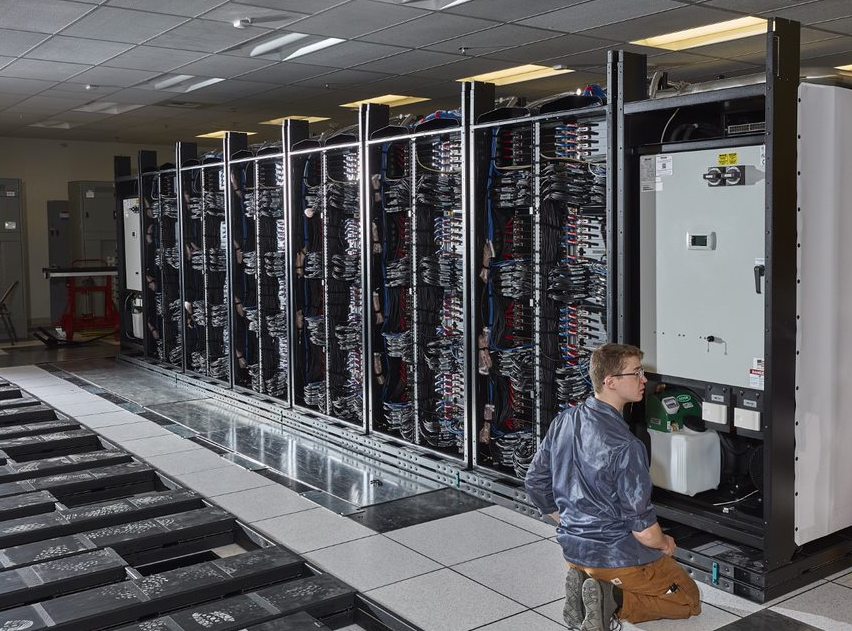AMD's Instinct MI300 Moves Into El Capitan Installation
LLNA begins to build 2 ExaFLOPS supercomputer.

Lawrence Livermore National Laboratory announced on Wednesday that it had begun to install components of its upcoming El Capitan supercomputer that is set to come fully online sometime next year. One key component of the system will be AMD's upcoming Instinct MI300 accelerated processing unit.
"We have begun receiving and installing components for El Capitan, first #exascale #supercomputer," a Tweet by LLNL reads. "While we are still a ways from deploying it for national security purposes in 2024, it is exciting to see years of work becoming reality."
Just like Frontier and Aurora, El Capitan is based on HPE's Shasta supercomputer architecture and is therefore built by HP Enterprise. The machine is expected to deliver performance than will be higher than 2 ExaFLOPS when it is completed in mid-2024 and should be the world's fastest supercomputer at that time.
The supercomputer will be based on AMD's Instinct MI300 hybrid processor that carries 24 general-purpose Zen 4 cores, CDNA 3-based compute GPUs, and 128GB of HBM3 memory onboard. The processor is produced by TSMC using one of its nodes that belong to the N5 (5nm-class) family.




AMD has been testing its Instinct MI300 processor internally for months now, but it looks like the company is finally ready to start delivering these parts to one of its key customers. Based on images published by LLNL, engineers from the lab have already installed quite a number of servers.
It's typical for supercomputer deployments to install parts of the system first to ensure everything works at the hardware and software levels. So, even though El Capitan won't be ready for full deployment until 2024, it's time for LLNL to start installing the first parts about a year before everything is complete. El Capitan will be the industry's first supercomputer to use hybrid processors packing both general purpose and stream processors.
Get Tom's Hardware's best news and in-depth reviews, straight to your inbox.

Anton Shilov is a contributing writer at Tom’s Hardware. Over the past couple of decades, he has covered everything from CPUs and GPUs to supercomputers and from modern process technologies and latest fab tools to high-tech industry trends.
-
thestryker This is going to be the really interesting one to watch. If it delivers what AMD has been promising not only will it be the highest performing supercomputer, but it also ought to be towards, if not, the top of the efficiency charts.Reply -
Ravestein NL Reply
What is interesting me is what they are going to use it for! I've read a little bit about the company that is building it and it's something to do with internal security of the UK and US if I read right. So, facial recognition and maybe control of digital currency and sort of stuff? Who are the biggest stockholders of LLNL?thestryker said:This is going to be the really interesting one to watch. If it delivers what AMD has been promising not only will it be the highest performing supercomputer, but it also ought to be towards, if not, the top of the efficiency charts. -
bit_user Reply
You can read about Lawrence Livermore National Lab, here:Ravestein NL said:What is interesting me is what they are going to use it for! I've read a little bit about the company that is building it and it's something to do with internal security of the UK and US if I read right. So, facial recognition and maybe control of digital currency and sort of stuff? Who are the biggest stockholders of LLNL?
https://en.wikipedia.org/wiki/Lawrence_Livermore_National_Laboratory
They discuss some of El Capitan's benefits and potential applications in this article:
https://www.llnl.gov/news/llnl-scientists-eagerly-anticipate-el-capitans-potential-impact
LLNL's mission areas are outlined here:
https://www.llnl.gov/purpose/missions
I don't see anything related to facial recognition or digital currency.
BTW, LLNL is a research lab, so they wouldn't be involved in doing any operational security.